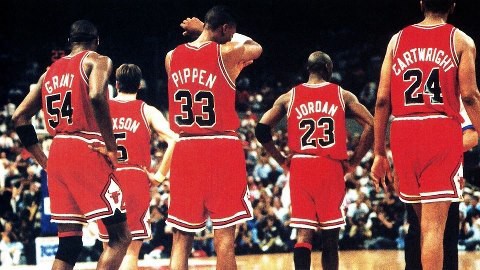Please don’t break up that high performing team!

I have number of friends who are teachers, and I’ve noticed a theme over the years. Each spring, school principals start sketching out their faculty line up for the following year. They look at who’s leaving and what positions they’ll need to fill. They look at test scores and evaluations to see how they can curate the best teams. And here’s where it gets interesting.
The theme I’ve picked up on over the years is that, in this exercise, this is where school principals choose to break up their highest performing teams to sprinkle those teachers around to lower performing teams. The thought being is that these high performers will infuse lower performing teams with some of their magic, and result in more high performing teams.
The result in reality though is that they just took a known quantity — a high performing team — and traded it for a wing and a prayer.
In some cases, this results in luck and new high performing teams. In most cases though they’re just resetting the clock to zero and making their teams start to climb the mountain again, hoping for the best. As they climb this mountain they’re learning each other’s style and quirks, establishing a shorthand, building trust, and maybe never reaching their previous level.
I’m certain there’s more at play here than meets the eye. Maybe those teachers aren’t as high performing as they think. Everyone rates themselves above average, right? Maybe the principal is evaluated or incentivized in such a way that one high performing class per grade is better for them than, say, all three of their fourth grade classes.
Sometimes high performers and teams can be toxic, and they don’t even recognize it. In these cases, if you can’t isolate them to prevent their toxicity from spreading, it might be appropriate to break them up. However, now you’re spreading negativity, which, disappointingly spreads far quicker and more effective than positivity.
While I use elementary education as the example here, it’s by no means the only place where we see this.
There was a study conducted that tracked highly compensated investment bankers, people who command big salaries for big results. The study tracked these bankers as they moved from the original place where they established their reputation as high performers to the next banks where they commanded even bigger compensation packages.
It found that, in most cases, these bankers never achieved close to their former glory in their new, incredibly well-paid positions. That is, except for the individuals who brought their original team with them. In those cases, they were able to replicate similar results to those that put them on the map.
Take the time to figure out what makes your high performing teams high performing.
Rather than break up high performing teams, take time to figure out what makes them so great. If you can figure that out, you have a better chance of turning those low or average teams into great ones too.
Maybe it’s the way the team communicates with each other. Your high performers might have found a way to engage in healthy conflict while your other teams let conflict simmer and stew. Your high performers might have built trust between them that allows them to more effectively and efficiently coordinate and give each other the benefit of the doubt.
All of this said, you might be sitting there and thinking, God, what I wouldn’t give for just *one* high performing team. In those cases, keep the faith.
Take a look at Patrick Lencioni’s book The Advantage: Why Organizational Health Trumps Everything Else in Business, or Crucial Conversations training by VitalSmarts, or the free materials available on Google’s re:Work website built using their own research into People operations, or the online course Inspiring & Motivating Arts & Culture Teams by National Arts Strategies and the University of Michigan’s Ross School of Business.
Building and maintaining stellar teams seldom just happens. But having and cultivating them can mean the difference between banging your head against the wall all day long or, seemingly effortlessly, achieving the impossible. Godspeed to you in your quest!
About Tim Cynova
Tim wears a multitude of hats, all in service of creating anti-racist workplaces where people can thrive. He currently is co-CEO of Fractured Atlas (an entirely virtual organization with staff spread across multiple states and countries) and a Principal of the consulting group Work. Shouldn't. Suck. He serves on the faculty of Banff Centre for Arts & Creativity and The New School teaching courses in People-Centric Organizational Design; he's a trained mediator, and a certified Senior Professional in Human Resources (SPHR). Earlier in his career, Tim was the Executive Director of The Parsons Dance Company and of High 5 Tickets to the Arts in New York City, had a memorable stint with the Cincinnati Symphony Orchestra, was a one-time classical trombonist, musicologist, and for five years in his youth he delivered newspapers for the Evansville, Indiana Courier-Press. Also, during a particularly slow summer, he bicycled 3,902 miles across the United States.

